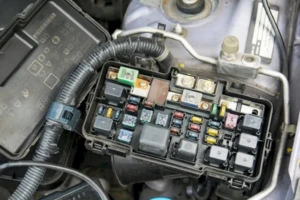How to Diagnose Electrical Problems in Your Car
Updated: December 30, 2024
20
How to Diagnose Electrical Problems in Your Car,Modern vehicles rely heavily on electrical systems to function. Diagnosing electrical issues in your car can save time, money, and frustration. This guide explores 15 essential steps to troubleshoot and resolve car electrical problems effectively.
Understand the Basics of Car Electrical Systems
A car’s electrical system includes the battery, alternator, starter motor, and wiring. Knowing their roles and interconnections is crucial. For instance, the battery powers the starter, and the alternator charges the battery while the engine runs. Familiarize yourself with their functions before diagnosing problems.
Recognize Common Signs of Electrical Problems
Symptoms like dim headlights, a dead battery, or malfunctioning dashboard lights indicate electrical issues. Pay attention to unusual sounds, warning lights, or the inability to start the car. Identifying these signs early can narrow down the problem.
Safety Precautions Before Starting Diagnostics
Ensure the car is turned off, and disconnect the battery to avoid electrical shocks or damage. Use insulated tools, wear gloves, and work in a well-ventilated area. Safety should always be your priority.
Check the Battery for Voltage and Corrosion
Start with the battery by using a multimeter to check its voltage. A healthy battery typically shows around 12.6 volts. Inspect for corrosion on terminals, which can hinder current flow. Clean the terminals if necessary.
Test the Alternator for Proper Functionality
The alternator recharges the battery. Use a multimeter to check its output, which should be around 13.8 to 14.4 volts when the engine is running. A failing alternator may cause a drained battery and other issues.
Inspect Fuses and Relays

Blown fuses or faulty relays can disrupt electrical circuits. Locate the fuse box (usually under the dashboard or hood) and inspect for blown fuses. Replace them with ones of the correct amperage rating.
Examine the Starter Motor
If the car fails to start, the starter motor might be the issue. Listen for clicking sounds when turning the key. If you hear none, test the motor with a circuit tester or seek professional help.
Look for Wiring and Connection Issues
Frayed wires, loose connections, or damaged insulation can cause electrical malfunctions. Inspect visible wiring and connectors. Repair or replace faulty components to restore functionality.
Use an OBD-II Scanner for Diagnostics
On-board diagnostics (OBD-II) scanners provide error codes that help pinpoint problems. Plug the scanner into the port (usually under the dashboard) and interpret the codes to identify faulty components.
Assess Lighting Systems
Check all lights, including headlights, brake lights, and interior lights. Dim or non-functional lights often indicate a weak battery, poor connections, or a failed bulb.
Verify Ground Connections
Poor grounding disrupts the electrical flow. Inspect grounding points, typically found near the battery or engine block. Clean and tighten connections to ensure proper current flow.
Diagnose Issues with Electrical Accessories
Malfunctioning accessories like power windows, locks, or the radio can stem from faulty circuits or motors. Test each accessory and examine their respective fuses and relays.
Monitor the Car’s Charging System
Ensure the battery and alternator maintain a consistent charge. A weak charging system can cause intermittent power issues. Test the system under different load conditions for accuracy.
Identify Parasitic Drains
Unusual battery drainage could result from devices staying on after the car is turned off. Use an ammeter to detect parasitic drains and locate the source, such as a stuck relay or faulty module.
Know When to Seek Professional Help
If you cannot identify or fix the issue, consult a professional mechanic. Complex electrical problems may require specialized tools and expertise to resolve.
Conclusion
Diagnosing electrical problems in your car involves a systematic approach, from checking the battery to inspecting wiring and using diagnostic tools. Addressing these issues early ensures your vehicle runs smoothly and safely. With this guide, you can confidently tackle common electrical problems or know when to seek professional help
Please Write Your Comments